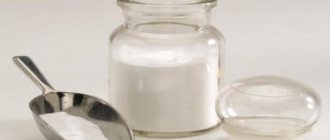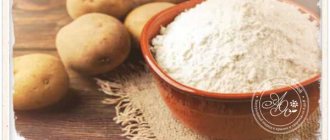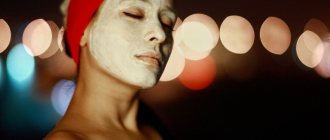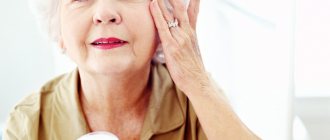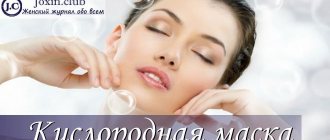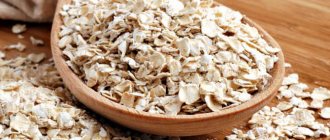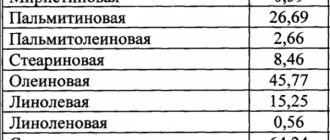In cosmetology, they began to use a component such as yeast. This product is great for preparing anti-aging masks, as it contains a large amount of useful vitamins, microelements and enzymes that are so necessary for the aging dermis. Among other things, yeast has anti-inflammatory, soothing and rejuvenating properties. With their help, you can solve several problems at once: smooth out wrinkles, get rid of acne, reduce inflammation and redness.
Yeast does not cause any harm to the epidermis, since it is a product of natural fungal origin, which means that girls with any type of dermis can use yeast-based masks.
Beneficial properties of yeast for the face
The beneficial properties of yeast are due to its rich composition, which has a beneficial effect and effect on the epidermis.
The product contains:
- Folic acid – has anti-inflammatory and wound healing properties.
- Thiamine – promotes accelerated metabolism in cells and tones the epidermis.
- Vitamin B7 is a useful vitamin that has a softening and moisturizing effect.
- Vitamin B5 is a protective factor for the body and skin, blocks the negative effects of the sun, protects the epidermis from harmful factors and radiation.
- Vitamin B2 - it can safely be called the vitamin of youth, because thanks to it, rejuvenating processes are launched in the skin, collagen production is stimulated, subcutaneous tissue is renewed, wrinkles are smoothed out and become less pronounced.
- Amino acids are substances responsible for the elasticity and tone of the epidermis.
- Minerals – help normalize the functioning of the sebaceous glands and trigger metabolic processes in the dermis.
All of the listed components, when applied to the skin in the form of a mask, begin to actively act and launch rejuvenation processes.
What does yeast contain?
Yeast contains macro- and microelements necessary for the body in general and for the face in particular, such as iron, potassium, phosphorus, magnesium, zinc. Vitamins (A, B, E, D, C), thiamine, riboflavin, ascorbic, pantothenic and folic acids. Antioxidants, amino acids, tocopherol, biotin, minerals and phospholipids.
Thanks to their composition, they bring great benefits to the epidermis:
- help cells regenerate;
- effectively nourish and soften;
- actively moisturize;
- stimulate metabolic processes in cells;
- dry out inflammation;
- dissolve sebaceous plugs;
- instantly tighten, increase tone;
- smooth the skin;
- normalize the functioning of blood vessels;
- participate in the process of collagen production;
- restore lipid metabolism and water balance.
Yeast or brewer's mushrooms must be present in homemade face masks
By introducing them into caring cosmetics, you can get complete skin care.
Express masks are especially good for an instant rejuvenating effect, for example, before an important event.
B vitamins
B vitamins are very important for the beauty and youth of the skin . They are the ones who give an amazing cosmetic effect when using yeast masks at home. A deficiency of this vitamin manifests itself in the form of premature aging, loss of tone, deterioration of color, and massive rashes.
Benefits of yeast
Regular use of yeast masks brings undeniable benefits for the epidermis. Thanks to this product, many problems are solved:
- yeast masks help fight acne, dry out rashes, and also improve the general condition of problematic dermis;
- enlarged pores narrow and become less noticeable;
- the walls of blood vessels are strengthened, microcirculation improves;
- yeast helps stop the process of withering and aging of the dermis that has begun, starting the process of collagen and elastin production;
- The protective functions of the epidermis are activated, tone and elasticity increase.
Our grandmothers kept the secrets of the yeast mask, so its benefits have been proven over time.
It is not recommended to use fast-acting dry yeast for making masks. The healthiest thing is brewer's yeast or a “live” product in briquettes.
Treat dry skin with yeast
#6: Moisturizing yeast mask with sauerkraut.
The cabbage needs to be chopped into a small salad and mixed with crushed yeast, add essential oils to the porridge, and mix again. There should be no lumps. Apply this mushy mixture to your face.
#7: Mask with beaten egg, yeast and grated apple.
Many remedies against dry dermis are made based on egg yolk, and for good reason, because it contains natural antioxidants that remove harmful substances from the body and cleanse the dermis. Mix the ingredients thoroughly and apply to the skin for 20 minutes. This is not only a moisturizer, but also an anti-aging agent. If you use it regularly, fine wrinkles will disappear in two weeks.
#8: For aging skin suffering from dryness, you need to make masks from cottage cheese and yeast cultures.
They will help quickly relieve irritation and eliminate signs of chapping. Mash the fermented milk product, sift it, and mix it with a spoonful of warmed flower honey, add yeast to the product, which must first be diluted in a spoonful of milk. This recipe will not only moisturize your face, but also whiten it. Keep it for half an hour.
Indications for use
Cosmetic products based on products of fungal origin help solve the following problems of the epidermis:
- acne, acne, comedones, pustules, blackheads;
- excessive work of the sebaceous glands, enlarged pores;
- excessive dryness of the dermis, itching, peeling;
- aging skin, losing firmness, tone and elasticity;
- facial and age wrinkles, creases and folds of the skin;
- gray uneven complexion caused by fatigue, nervous exhaustion or vitamin deficiency.
What types of yeast are there?
To date, more than 1,500 thousand species of various yeast fungi have been identified. But we usually use only a few of this variety. And first of all, of course, yeast, which has the ability to ferment wort, turning it into the well-known foamy intoxicating drink. It is believed that the use of yeast began 8-9 thousand years ago, which means they are one of the very first living organisms that man deliberately put into his service.
Of course, the inhabitants of prehistoric Mesopotamia did not consider yeast as a cosmetic product; they were used for its intended purpose - for brewing beer. Then, around the 6th millennium BC, people living in the territory of modern Georgia came up with the idea of using yeast as a fermenter of grape juice to produce wine. And finally, around 1200 BC, the ancient Egyptians first fermented dough with yeast and baked yeast bread. But it was only in 1838 that the French scientist Charles de La Tour discovered that yeasts are living organisms that can grow and reproduce. And the first culture intended specifically for making beer was purposefully bred by Emil Hansen, who worked for the Carlsberg brewing company.
Recipes for the best homemade masks
With the help of yeast masks, you can not only stop the process of withering of the epidermis that has begun, but also eliminate the appearance of wrinkles, smooth out the skin texture, tone and moisturize the dermis. Let's consider the most popular and effective options for cosmetic products for the care of the epidermis:
Anti-wrinkle
This mask perfectly smoothes both facial and age wrinkles, increases the elasticity of the epidermis, tones and strengthens the skin. The product is suitable for any type of dermis, and for women with pronounced signs of aging. For preparation you will need: yeast – 40 g, olive oil – 10 ml, almond oil – 5 ml. The yeast mass must be dissolved in tea, milk or herbal infusion until soft, and then the remaining oil components must be added. Mix everything thoroughly and apply to the face and neck area towards the lymph nodes. Leave the mixture on your face for no more than 25 minutes, then rinse with clean water.
For dry skin
The antioxidants contained in yeast help remove toxins from cells and speed up metabolic processes. After using this mask, the complexion becomes even, bright, the dermis is soft and silky without flaking or dryness. The product is excellent for dry epidermis. Prepare a homemade mask from 70 g. “live” yeast, 30 ml. unsweetened natural yogurt, 20 gr. cottage cheese and 5 gr. dry parsley. To begin with, you should heat the yogurt to a comfortable temperature of 35-36 degrees, and then add the yeast and mash with a fork until smooth. Next you should add grated cottage cheese and ground parsley leaves. The prepared composition must be applied to a previously steamed and cleansed face in a thick layer, including the eyelids (eyes must be kept closed). While the mask is in effect, try to avoid excessive facial expressions, do not talk and relax. The mass should be on the face for at least 15-20 minutes, after which the composition should be washed off with a decoction of plantain with the addition of a few drops of any essential oil.
For oily skin
This option is perfect for oily dermis, since with the help of a mask you can normalize the functioning of the sebaceous glands, eliminate oily sheen, and eliminate inflammation and rashes. To prepare, take 3 tablets of brewer's yeast, 1 unripe banana, 15 ml. aloe juice, 25 ml. sea buckthorn oil. To start, you need to crush the tablets and pour 1 tablespoon of green tea at room temperature, then mash the banana, add yeast and other ingredients. The composition should be thoroughly mixed and applied to a previously cleansed or steamed face. After 15-16 minutes, remove the mass using napkins.
Upon completion of the procedure, wipe your face with a cotton pad soaked in grapefruit juice.
Creams and serums can be applied to the dermis after a couple of hours.
For combination dermis
This mask is recommended for use by girls with a combination type of epidermis. Regular treatments with a yeast mask help smooth out wrinkles, improve the condition of the dermis, tighten pores, and make the skin matte and elastic. For cooking you will need: 1 tbsp. yeast, 1 tbsp. flour, 1 egg, 1 tsp. honey, 1 tsp. olive oil, half a glass of milk. First, stir the yeast in warm milk, then add the egg and olive oil. Everything is mixed and honey and flour are added. Bring the mixture until smooth, then apply to cleansed face for 20-25 minutes. After the time has passed, the face must be washed with clean water.
For acne
This option is suitable for girls with oily or problematic skin, as with the help of a mask you can get rid of redness, inflammation and eliminate pimples and acne. You can prepare the product from the following ingredients: 1 tsp. lemon juice, 3 tablespoons of yeast, a little water. All ingredients must be mixed and brought to a homogeneous state. The composition should be applied to problem areas and inflammation, leave for no more than 20 minutes, then wash with warm water and wipe your face with tonic.
From yeast and hydrogen peroxide
A mask based on yeast and hydrogen peroxide is an excellent preventative for aging skin. With its help, you can stop the beginning of the aging process, as well as whiten age spots and remove acne scars. You can prepare the composition from 2 tsp. yeast and 1 tsp. hydrogen peroxide 3%. All components must be mixed in a glass container and applied to the face with massage movements. Leave the product on the skin for no more than 20 minutes, then rinse with green tea. Then you can make a compress from chamomile infusion and apply a moisturizer suitable for your epidermis type.
From brewer's yeast
Brewer's yeast is perfect for any type of epidermis: oily dermis will be made matte, dry and sensitive dermis will be saturated with vitamins and minerals. This version of the mask is well suited in the autumn-winter period, when the skin needs additional vitamins and microelements. A mixture is prepared from 2 tablets of brewer's yeast, 1 yolk, 15 ml. honey, 17 ml. sesame oil. First of all, crush the yeast, add mineral water and mix well. Add yolk, honey and oil to the resulting mass, mix thoroughly and apply to cleansed face and décolleté. After 25 minutes, the composition must be removed.
From yeast and milk, rejuvenating
This option is suitable for girls with any type of epidermis. After the milk mask, the dermis is rejuvenated, the complexion becomes even, and age spots are whitened. For preparation you will need: dry yeast – 30 g, milk – 30 ml, 1 apple, Vitamin A. Yeast should be diluted in milk and left for a short time. At this time, bake the apple in the oven, make a puree from it and combine with all the components of the mask. The resulting mass should be applied to a cleansed face for 10-12 minutes, then rinsed with water and applied with a light moisturizer.
Milk-honey yeast mask
This option can be used for women of any type of epidermis with obvious signs of aging. An anti-aging mask based on yeast, milk and honey perfectly nourishes and moisturizes the dermis, making it smooth and velvety. Prepare the composition for application from half a glass of milk, 1 tsp. honey, 1 yolk, 2 tsp. olive oil and 1 tbsp. yeast powder. Combine all components one by one, heat in a water bath and bring to a homogeneous state. Apply the resulting composition to the face and leave for 20-25 minutes.
Mechanism of action
To ensure the required result (get rid of acne, wrinkles, sagging skin), you should take yeast, and at the same time perform care procedures. When administered orally and externally, the following effects are achieved:
Restoration of gastrointestinal functions: motility and the condition of the mucous membranes improve, microflora is normalized. The latter process is considered important for the condition of the skin, since it marks the timely cleansing of the intestines from toxins and harmful microorganisms.
Stabilization of the immune system: this is largely due to the fact that during yeast therapy, metabolism is normalized, as a result of which the body’s natural response is supported in various pathological processes that can affect the condition of the skin.
Restoration of hormonal levels, resulting in a decrease in the intensity of rashes. If you use care products (masks, scrubs) in this case, there will be no result, because acne that has formed as a result of hormonal disorders will not disappear under the influence of external factors, so it is recommended to start with oral agents.
When yeast is used externally, useful substances enter the structure of the epidermis, which contribute to the normalization of metabolic processes at the cellular level; they also have a slight effect on organs and systems, since they are not intensively absorbed. However, when applied externally, there is an improvement in the condition of the skin, which is due to the restoration of the elasticity of cell membranes and the provision of tissue nutrition.
How to prepare masks correctly
The basic rule of a yeast mask is that the product must ferment, so it must be dissolved in water or milk and left for a while. “Live” yeast, which is sold in briquettes, is best suited, since it contains the most nutrients and vitamins that are necessary for the fading dermis. The yeast should be stirred until completely dissolved so that there are no lumps.
Since the product is “live”, the mask should be prepared immediately before application; you should not prepare the product for future use and leave it for later. It is best to prepare the mixture in a large container, since when the yeast swells, it increases in volume.
Before cooking, you should carefully inspect the briquette; there should be no traces of mold on it, the expiration date should be normal, and the product itself should have the smell of bread.
You should not use a product that has a sour odor; most likely it is spoiled or was stored incorrectly.
Secrets of use
Traditional recipes are good if you know exactly how to use them.
5 beauty rules, how to properly make face masks from yeast:
- Be sure to check the expiration date of the product;
- Apply the mixture to a cleansed face;
- Although it is recommended to use only natural yeast, dry yeast is also suitable for cleaning;
- Yeast-based cosmetics can cause allergies, so be sure to conduct a preliminary test;
- For normal and dry skin, daily use of the product is allowed, and for aged or sensitive skin - once every three days.
General rules and tips for use
When carrying out anti-aging procedures at home, you must follow some rules:
- Yeast masks are applied to the face for no more than 15-25 minutes.
- After the procedure, the dermis must be moisturized with a cosmetic cream.
- The mass is applied only to a well-cleansed or steamed face. This way, beneficial substances can penetrate deeper into the epidermis.
- It is recommended to wash off the composition on your face with herbal decoctions or a contrast shower with alternating temperatures.
- If the care product does not contain aggressive ingredients, then the mass can be applied to the eyelid area.
- The composition is applied in a small layer, including to the décolleté and neck.
- You should make yeast masks no more than 1-2 times a week, in a course of 10-15 procedures.
If discomfort or burning sensation occurs, the composition must be removed immediately.
What is yeast anyway?
Under this name they unite a whole group of living beings that belong to the kingdom of mushrooms. Unlike the familiar honey mushrooms and boletuses, these mushrooms do not grow on mycelium, but in the process of evolution turned into single-celled organisms. This happened due to the fact that they were accustomed to living in a liquid environment with a large number of organic components. Of course, this form of life is simpler compared to ordinary mushrooms. But, on the other hand, in many ways it was this feature that made the yeast cell a multifunctional “factory” for the production of many useful substances.
Contraindications
As such, the product of fungal origin has no contraindications, so it can be used without fear. A negative reaction may occur if you have an individual intolerance to the substance.
It is also not recommended to use yeast masks if:
- there are fungal infections on the epidermis;
- there are open wounds, ulcers or cuts on the skin.
Before using the product, it is better to conduct an allergy test; if there is no reaction, then the composition can be used.
Reviews from women about the effectiveness of yeast against wrinkles
Most women have long been convinced of how effective a yeast mask is. Therefore, it is difficult to come across a negative review about such a unique product. Yeast face masks for wrinkles, acne, and pigmentation have become popular for millions of women, from schoolgirls to pensioners. Millions of grateful reviews can be found online and heard in beauty salons. It would be stupid to miss such an opportunity. After all, a means to restore youth is available in every home or can be purchased for pennies in the nearest store.
Read in a separate article: “What are alginate masks”
General rules for preparing yeast masks
All types of yeast are used to prepare masks: raw, granulated, dry, in the form of capsules (beer). Raw yeast is the most useful because it has a higher concentration of nutrients. To maintain exact proportions, you need to take into account that 1 tsp. dry yeast is equal to 10 g of raw product.
The yeast must be fresh, “live”. To check their freshness, a pinch of yeast is mixed with water, kefir and placed in a warm place for 10-15 minutes. If foam appears on the surface of the liquid, it means that the main component of the mask is fresh.
To prepare the mask, take a container whose volume is several times larger than the original volume of the prepared product, since the yeast retains the ability to increase the volume of liquid.
To increase the therapeutic effect, water in mask recipes is replaced with a decoction of medicinal herbs. Chamomile decoction is perfect for blondes and fair-haired girls, and nettle decoction is perfect for brunettes and brown-haired girls.
The general rule for all masks is that first the yeast, diluted with liquid, should stand for 40-60 minutes, “come up”, and then the remaining components of the mask are added to this mass. If you are making a mask with such ingredients for the first time, you should do an allergy test - apply 2-3 drops of the solution to the elbow bend and monitor the skin reaction for an hour. If there is no redness or swelling, the mask can be safely applied to the hair.
Rules for using face masks
Always prepare your face for the procedure - cleanse the skin with foam, gel, tonic or milk, and then rinse with warm water. If there are no contraindications, you can additionally use a scrub.
Before applying the mask, you can steam your skin a little - apply a hot compress to your face for 3-5 minutes. This will improve the absorption of nutrients from the mask.
Apply the composition with your fingers or a sponge along the massage lines. Move from bottom to top, starting from the chin area, then from the chin area to the earlobes, from the corners of the lips to the ears. Then apply the mask from the middle of the forehead - to the hairline and temples. Additionally, apply the composition to the skin of the neck and décolleté. Apply nourishing eyelid cream to the area around the eyes and lips.
Keep the mask on your face for 20-30 minutes for oily skin and 15-20 minutes for dry skin. Don't touch your face with your hands, don't talk, and try to relax.
After the procedure, rinse off the composition first with warm and then cool water. Don't use soap.
Apply a soothing and moisturizing cream or serum to your face.
Video on how to make a mask with chickpea flour
Dear readers, please share this material with your subscribers on social networks!


